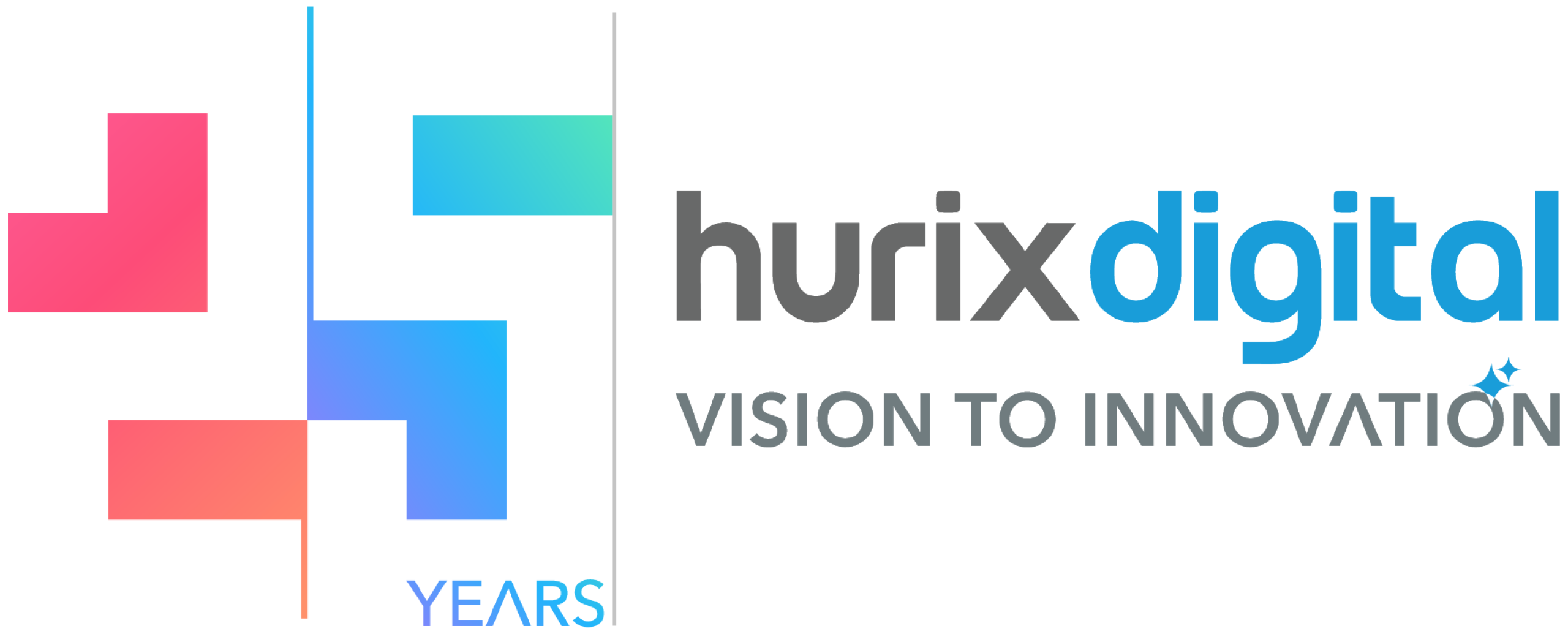
Are These User Experience Design Trends Killing Your Engagement?
Companies used to only think about user experience (UX) design after they had finished everything else. First, send the product. Then, make it look nice. That way of thinking seems almost old-fashioned now. If you go into a boardroom where digital strategy is being talked about, you’ll hear executives talking about user journeys and conversion funnels all the time. Some businesses might not have known how big the change was until it was too late.
Here’s what changed: users got options. Lots of them. If your educational platform makes teachers feel stupid when they can’t find the gradebook, they’ll switch to something else by next semester. Students who can’t figure out how to submit assignments don’t blame themselves anymore; they blame your product. And they’re right to do so. Learning is actively hindered by a bad UX in edtech. When a confusing interface stands between a student and their education, that’s a genuine problem worth solving.
The thing is, most leadership teams know UX matters. What they struggle with is the how. How do you prove design investments pay off when the benefits seem fuzzy? How do you build a design team that actually delivers instead of debating typography for six months? These questions go beyond theory to become practical challenges that determine whether companies thrive or merely survive. So let’s dig into them, one by one, with the kind of honesty these topics deserve.
Table of Contents:
- How Do We Quantify User Experience Design ROI Effectively?
- What UX Metrics Best Measure Product and Business Success?
- How to Integrate UX Strategy Seamlessly Into Product Roadmap?
- Scaling User Experience Teams: What Organizational Structures Work Best?
- What Role Do Leaders Play in Fostering a User-Centric Culture?
- What Emerging UX Trends Significantly Impact Our Long-Term Strategy?
- How Will AI Redefine Core User Experience Design Principles?
- What Strategies Work Best to Gain Executive Support for UX Investment?
- How Can Enterprises Build a High-Performing UX Design Team?
- What’s the Best Way to Balance User Needs, Business Goals, and Technical Feasibility?
- A Final Word
How Do We Quantify User Experience Design ROI Effectively?
Money talks. Everything else is just nice conversation. So when someone asks about UX return on investment, they’re really asking whether design improvements will make or save money. Fair question. Tricky answer.
The challenge? Good design prevents problems that never happen. How do you measure the customer service calls that didn’t come in because your interface finally made sense? Or the students who didn’t drop out because they could actually find their assignments? You can’t photograph a dog that didn’t bark. But you can get close.
Here’s what works: Pick your battles and measure them obsessively. Before redesigning anything, document the current mess. Support tickets per feature. The time users waste on simple tasks. Rage-clicks on buttons that don’t look clickable. Get numbers, even if they’re ugly. Especially if they’re ugly.
Then fix one thing. Maybe it’s that confusing enrollment flow that generates 40% of support tickets. Redesign it. Launch it. Measure again. Did tickets drop? By how much? What are the cost savings? There’s your ROI, nice and clean. Multiply that success across other problem areas, and suddenly the math gets interesting. A 30% reduction in support contacts across the board? That’s real money.
What UX Metrics Best Measure Product and Business Success?
Everyone loves dashboards. All those numbers and charts make us feel like we’re in control. The majority of metrics companies track are vanity metrics, meaningless numbers. Time on site sounds great until you realize users are stuck, not engaged.
Let’s talk about metrics that actually matter. Task success rate is the foundation. Can users do the thing they came to do? Simple question, brutal honesty required. If 40% of students can’t submit their first assignment without help, you’ve got problems no amount of marketing can fix.
But success isn’t enough. Speed matters too. The speed of content is not always better. Sometimes you want users to slow down and engage deeply. But when basic tasks take forever, frustration builds. Track task completion time, but understand the context. Submitting homework should be quick. Reading comprehension exercises should take time.
Here’s a metric most companies ignore: error recovery rate. How often do users successfully recover when something goes wrong? Because things will go wrong. Networks fail. Users make mistakes. The difference between good and great UX often lies in how gracefully the system helps users recover. If your error messages might as well be written in Sanskrit, fix that before adding new features.
For edtech specifically? Track learning efficacy metrics alongside usability. Course completion rates. Assignment resubmission patterns. Help-seeking frequency. Sometimes those goals align perfectly. Sometimes they conflict. Guess which situation requires actual design thinking?
How to Integrate UX Strategy Seamlessly Into Product Roadmap?
Most product roadmaps look like feature wish lists that someone prioritized after three beers. “AI-powered something” sits at the top because it sounds innovative, while “Fix the search function that hasn’t worked properly since 2019” languishes at the bottom. This is backward.
Here’s a radical idea: Put designers in the room when you’re deciding what to build, not after you’ve made the decision. They should be arguing with product managers about priorities, not decorating predetermined features. Yes, this causes friction. Good. Friction generates heat, heat produces energy, and energy yields better products. Stop writing roadmaps in feature language. “Implement gamification” tells you nothing about why you’re building it. “Help unmotivated students complete difficult modules,” explains the actual problem. Now designers, developers, and product managers can collaborate on solutions. Maybe gamification helps. Maybe better feedback loops work better.
Design debt is real debt. Every shortcut, every “we’ll fix the UX later,” every rushed implementation creates friction that compounds daily. Users develop workarounds. Support creates documentation for broken features. Sales apologizes during demos. Meanwhile, that debt accumulates interest in the form of user frustration and competitive disadvantage. Schedule regular payments on this debt, or declare bankruptcy when users leave for better-designed alternatives.
Scaling User Experience Teams: What Organizational Structures Work Best?
Like raising teenagers, growing a design team involves a series of spectacular failures. The scrappy startup approach of “everyone does everything” breaks down around designer number five. The corporate matrix structure suffocates teams of two.
Three models dominate. But none are perfect.
Centralized Design
Centralized design teams maintain consistency. Designers report to a design boss, and work gets assigned from a central pool. Great for maintaining standards. Terrible for speed. Designers become order-takers, not partners. They throw designs over the wall and hope developers catch them. Spotify abandoned this model because designers felt like they were running a service desk, not building products.
Embedded Models
Embedded models put designers directly on product teams. Fast iteration. Tight collaboration. Designers feel ownership. But visit a company using this model after two years. You’ll discover that their products look like different companies built them. Because essentially, they did. Without strong design leadership connecting these embedded designers, chaos emerges. One team uses blue buttons, another prefers green. Users suffer.
Hybrid Model
The hybrid model tries to have it both ways. For craft and standards, designers have a design lead, and for daily work, they have a product lead. Sounds complicated because it is. When it works, like Airbnb, it really works. The trick is keeping both reporting lines meaningful, not letting one dominate.
What actually matters more than structure? Culture and communication. A centralized team with great collaboration tools and clear processes outperforms an embedded team that never talks. Regular design critiques, shared component libraries, and clear principles matter more than org charts.
What Role Do Leaders Play in Fostering a User-Centric Culture?
Despite what consultants claim, culture change is like losing weight-everyone knows what to do, but few actually do it. Creating a user-centric culture requires leaders to actually care about users, not just say they do during quarterly presentations.
Actions speak. Budgets scream. If you claim users matter but cut UX research funding while doubling sales staff, everyone knows what really matters. If executives never meet actual users but have weekly pipeline reviews, the message is clear. Culture is what you do when nobody’s documenting it for the company newsletter.
Want real change? Start with leadership habits. Make executives use their own products—not demos, not sanitized test environments—the actual product, with actual data, doing actual tasks. Watch them struggle with the same confusing workflows everyone complains about. Nothing changes perspective like personal frustration.
Get users in the building. Advisory boards are fine, but they attract power users who’ve learned your weird workflows. You need regular users. The ones who struggle. The ones who call support. Invite them in. Let them tell their stories to the people making decisions. Videos work if visits aren’t possible, but nothing beats seeing frustration in person. Make user impact part of performance reviews. Engineers should know how their code affects users. Salespeople should understand what they’re really selling. Finance should grasp why UX investment returns compound over time. When everyone owns user experience, culture shifts from talking about users to thinking like users.
What Emerging UX Trends Significantly Impact Our Long-Term Strategy?
The majority of trends fade quickly, some become classics, and jumping on every bandwagon makes you look desperate. The trick is distinguishing between genuine shifts and shiny distractions.
Personalization through AI isn’t new, but it’s finally moving past “recommended for you” carousels. Modern systems adapt entire interfaces based on user behavior. For education platforms, this could mean revolutionary changes. A struggling student sees more scaffolding. An advanced learner gets accelerated challenges. The interface itself becomes a teaching tool. But there’s a dark side. When personalization becomes manipulation, when algorithms optimize for engagement over learning, we’ve failed our users.
Accessibility stopped being a compliance checkbox and became a competitive advantage. Turns out, designing for disabilities helps everyone. Captions help in noisy environments. High contrast helps in bright sunlight. Simple language helps stressed students. Companies that design inclusively from the start reach bigger markets without retrofitting. Plus, it’s the right thing to do. That should matter.
How Will AI Redefine Core User Experience Design Principles?
AI won’t take the place of designers. But designers who use AI will take the place of those who don’t. That’s not a threat; it’s a chance to focus on what people do best while machines do the hard work.
AI already accelerates the boring parts. Generate twenty homepage variations in minutes. Test them with simulated users. Identify patterns humans miss. What took weeks with the help of AI-powered tools like Dictera now takes hours. But here’s the catch: AI optimizes for metrics you give it. Tell it to maximize engagement, and it’ll create addictive patterns. Tell it to maximize learning; it needs human wisdom to define what that means.
The real revolution is predictive interfaces. Instead of users hunting through menus, relevant options surface automatically. A student struggling with math gets offered tutoring. A teacher grading papers sees similar assignments grouped. The interface anticipates needs. When this works, it feels magical. When it fails, it feels creepy and invasive.
AI forces designers to think about ethics constantly. When an algorithm decides what content students see, who’s responsible for bias? When predictive text helps write essays, where’s the line between assistance and cheating? The most profound change might be moving from static to dynamic design. Instead of creating fixed interfaces, designers define rules and ranges. The AI assembles experiences on the fly based on context. This requires different skills—systems thinking, probability understanding, and ethical reasoning. Designers become conductors, orchestrating AI capabilities rather than pixel pushers crafting static screens.
What Strategies Work Best to Gain Executive Support for UX Investment?
Executives hear pitches constantly. Everyone needs money, and everyone promises ROI. Your UX investment proposal competes with cybersecurity upgrades, sales tools, and that blockchain initiative someone’s still pushing. Standing out requires strategy, patience, and occasionally, cunning.
Skip the design jargon. Executives don’t care about design thinking or user journeys. They care about customer retention, competitive advantage, and risk mitigation. Frame UX investment in their language. Poor experience is a business risk. Quantify it. Show them the support costs. Show them the customer churn.
Timing matters enormously. Don’t pitch major UX investment right after a bad quarter. Don’t compete with urgent fires. Wait for moments when long-term thinking is possible. New fiscal year planning. Post-acquisition integration. Competitive threats that require a response. Find windows when strategic investment makes sense. Build allies before you need them. Sales teams love better demos. Customer success wants fewer escalations. Engineering appreciates clear specifications. Get these groups advocating for UX investment. When multiple departments request the same thing, executives listen. When only designers ask, it sounds self-serving.
Competition motivates. Show what others are doing. Not to copy, but to create urgency. “Our three main competitors redesigned their platforms last year. Customer satisfaction scores show…” Nobody wants to fall behind. Fear of losing often motivates more than the opportunity to win.
How Can Enterprises Build a High-Performing UX Design Team?
Great design teams are like great bands. Individual talent matters, but chemistry matters more. The Beatles weren’t the four best-in-class musicians. They were four good musicians who created magic together. The same principle applies to UX teams.
Start with researchers who actually like talking to humans. Sounds obvious, but many researchers prefer spreadsheets to people. You need both eventually, but start with someone who gets energized by user sessions, who asks follow-up questions that reveal hidden insights. Technical skills can be taught. Curiosity can’t. Interaction designers need a range. Yes, they should craft beautiful interfaces. But they also need to understand technical constraints, business realities, and human psychology.
Content strategy is where many teams fail. Words matter enormously in educational interfaces. The difference between “Submit” and “Turn in assignment” might seem trivial. It’s not. One feels bureaucratic. The other feels familiar to students. You need someone who obsesses over these details, who understands that microcopy can make or break user confidence.
Visual design still matters, despite the trend toward standardization. But modern visual designers do more than make things pretty. They understand how aesthetics affect perception, how color influences emotion, and how typography impacts comprehension. They create systems, not just screens. Design technologists bridge the gap between design and development. They prototype interactions too complex for static tools. They understand technical possibilities and limitations. Without them, designers create impossible dreams and developers build compromised realities.
What’s the Best Way to Balance User Needs, Business Goals, and Technical Feasibility?
Everyone wants everything. Users want free products with infinite features that read their minds. Business wants profitable growth with minimal investment. Engineers want elegant systems with clean code and reasonable deadlines. Welcome to the eternal triangle of suffering.
The first truth: Perfect balance doesn’t exist. You’re always optimizing for one dimension while managing constraints from others. The key is making these trade-offs consciously rather than defaulting to whoever shouts loudest or gives up last. Start by acknowledging that these forces sometimes align. Users abandoning your product because it’s unusable hurts business more than any feature delay. Technical debt that makes development crawl affects everyone. Finding these alignment points creates win-win-win situations. Focus there first.
There will be conflicts, but transparency should prevail. Lay out options clearly. Option A delights users but costs millions. Option B makes money but frustrates everyone. Finally, Option C is technically elegant but solves the wrong problem. Let stakeholders see trade-offs explicitly. Amazing how reasonable people become when they understand constraints. Create frameworks for decisions. When facing trade-offs, what principles guide choices? Maybe user safety always wins. Maybe technical stability trumps new features during certain periods. Or, maybe business sustainability takes priority during economic uncertainty. Having agreed-upon principles prevents relitigating every decision.
Document decisions and reasoning. Six months later, when someone asks, “Why did we compromise on that feature?” you’ll have answers. More importantly, you’ll learn from patterns. Maybe you consistently underestimate technical complexity. Maybe business constraints always seem urgent, but rarely prove critical. These patterns teach you to balance better over time.
A Final Word
Here’s what twenty years in digital products teaches you: the questions don’t get easier. They get different. Today’s AI and personalization challenges replace yesterday’s mobile and responsive design debates. Tomorrow will bring problems we can’t imagine yet.
But the core remains constant. Humans use tools to accomplish goals. Organizations try to serve those humans while remaining viable. Technology enables and constrains possibilities. The balance between these forces determines success.
For companies like Hurix Digital, mastering UX as a service means navigating evolving challenges with human-centered design that empowers users and drives business success. Discover how our UX services help you in creating experiences that adapt today and innovate tomorrow. Connect with us to transform your digital journey.

Associate Vice President – User Experience Design at Hurix Digital (EMEA), with 10+ years in UX and design leadership. She champions AI‑driven, inclusive, and strategy‑led UX across banking, fintech, EdTech, MedTech, and e‑commerce sectors.
 Upcoming Masterclass | Build an Army of Brand Evangelists using Training & Development | November 20th, 8:30 AM PDT | 11:30 AM EDT | 10:00 PM IST
Upcoming Masterclass | Build an Army of Brand Evangelists using Training & Development | November 20th, 8:30 AM PDT | 11:30 AM EDT | 10:00 PM IST

